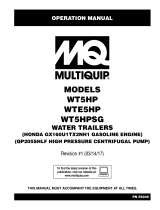
Table of Contents
ix
[us] | 11/2020 | 5200016690 | E1250 | Operator’s manual
7.8 Replacing the Burner Nozzle ............................................................................................................... 50
7.9 Setting the "Z" Distance....................................................................................................................... 51
7.10 Adjusting the Air Settings..................................................................................................................... 52
7.11 Adjusting the Fuel Pressure................................................................................................................. 53
7.12 Factory Settings................................................................................................................................... 54
7.13 Factory Settings—NG/LP .................................................................................................................... 54
7.14 Setting up the Burner........................................................................................................................... 55
7.15 Setting Up the Burner—Gas ................................................................................................................ 56
7.16 Removing the Combustion Head......................................................................................................... 58
7.17 Adjusting the Ionization Probe and the Electrode................................................................................ 59
7.18 Changing the Burner Orifice ................................................................................................................ 60
7.19 Checking the Burner Air Damper Setting............................................................................................. 61
7.20 Adjusting the Head Setting .................................................................................................................. 62
7.21 Checking the Supply Gas Pressure..................................................................................................... 63
7.22 Changing the Burner from Natural Gas Burning to LP Burning ........................................................... 64
8 Operation
8.1 External Components .......................................................................................................................... 66
8.2 Internal Components—Burner Access Door........................................................................................ 67
8.3 Internal Components—Rear Access Doors......................................................................................... 68
8.4 Main Control Panel Components......................................................................................................... 69
8.5 Generator Control Panel Components ................................................................................................ 70
8.6 Checking the Heat Transfer Fluid (HTF) Level .................................................................................... 70
8.7 Control Display Screen ........................................................................................................................ 71
8.8 Options Menu ...................................................................................................................................... 72
8.9 Changing the Outlet Mode................................................................................................................... 75
8.10 Changing the Operating Mode............................................................................................................. 76
8.11 Changing the Strobe Light Control ...................................................................................................... 77
8.12 General Sequence of Operation .......................................................................................................... 78
8.13 Before Starting the Machine ................................................................................................................ 79
8.14 Starting, Operating, and Stopping—Machines with Generators .......................................................... 80
8.15 Starting, Operating, and Stopping—Machines without Generators ..................................................... 84
8.16 Unwinding and Positioning the Hoses ................................................................................................. 86
8.17 Hose Spacing Guidelines .................................................................................................................... 86
8.18 Operating the Machine ........................................................................................................................ 87
8.19 Rewinding the Hoses........................................................................................................................... 88
8.20 Filling the Heat Transfer Fluid (HTF)—Low Level Fault Condition ...................................................... 89
8.21 Using the Quick-Connect Coupling...................................................................................................... 91
9 Accessories
9.1 Accessories.......................................................................................................................................... 93
9.2 HX Series Heat Exchangers ................................................................................................................ 93
























